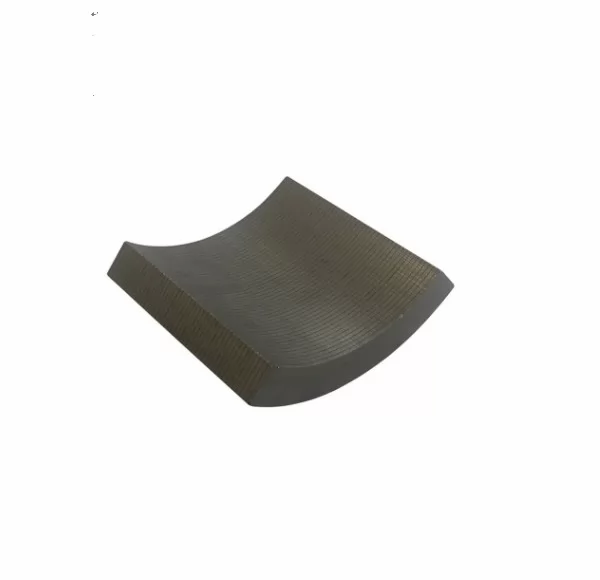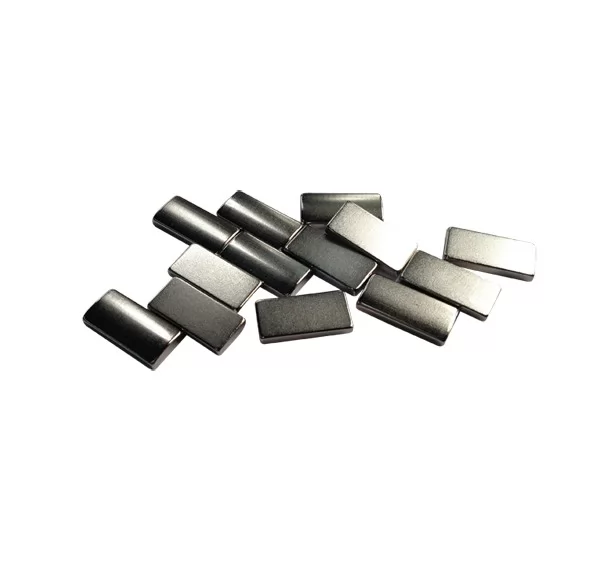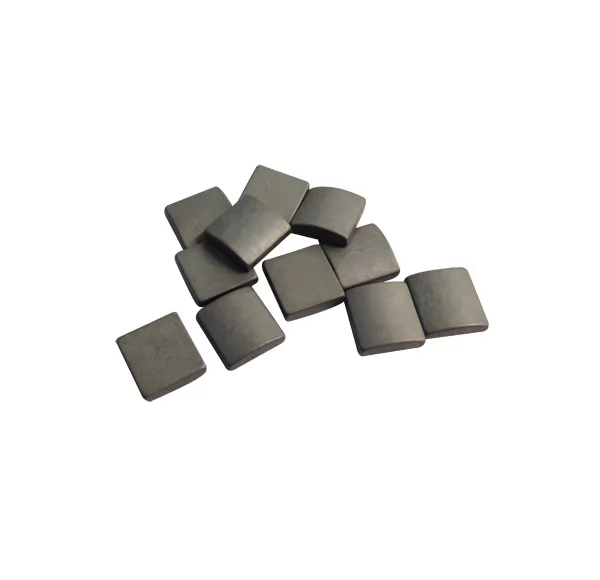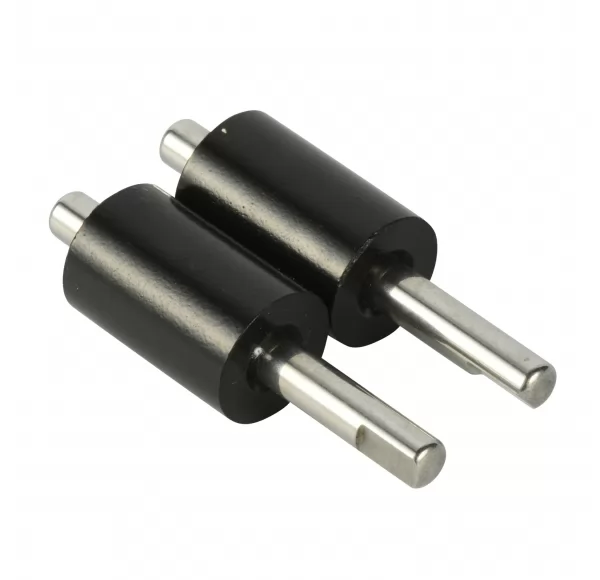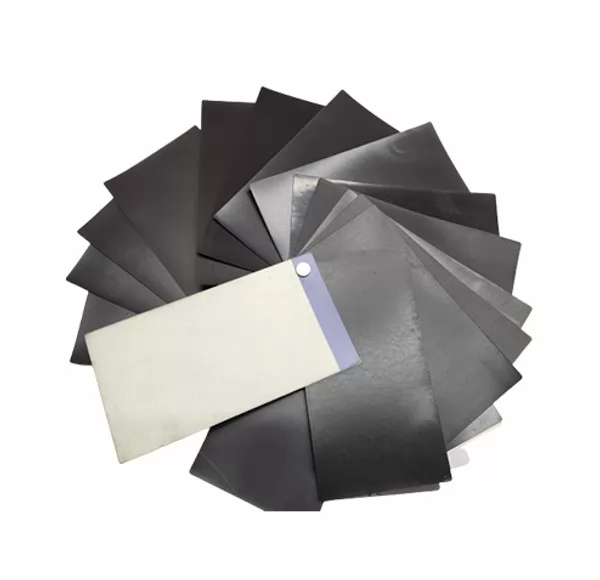Neodymium Magnet vs Ferrite Magnet: What is the Difference
When it comes to magnets, two types stand out for their widespread use and distinct properties: neodymium magnets and ferrite magnets. Understanding the differences between these two magnet types is crucial for choosing the right material for your application. In this article, we'll explore the specific characteristics of neodymium magnets and ferrite magnets, their applications, strengths, and weaknesses.
-
Specific Applications of Neodymium Magnets and Ferrite Magnets
-
What is the difference between Neodymium Magnets and Ferrite Magnets?
1. Specific Applications of Neodymium Magnets and Ferrite Magnets
In both industrial and everyday contexts, neodymium magnets and ferrite magnets are widely used. Although they are both permanent magnets, their performance and usage in various scenarios differ significantly. Understanding these differences is crucial for selecting the right type of magnet.
Firstly, neodymium magnets are renowned for their powerful magnetic strength. This intense magnetism makes neodymium magnets extremely useful in applications requiring high magnetic force. For example, in motors and generators, the strong magnetic field of neodymium magnets enhances the efficiency and performance of the equipment. Additionally, neodymium magnets are commonly used in hard disk drives, MRI machines, and some high-performance audio equipment, all of which rely on strong magnetism for operation.
Moreover, neodymium magnets are extensively used in the electronics and electrical industries. Modern smartphones and tablets, for instance, utilize neodymium magnets in some components to achieve stronger adhesion and higher precision. Due to their excellent performance, neodymium magnets are increasingly common in high-tech products.
On the other hand, ferrite magnets are favored for their low cost, high corrosion resistance, and good stability. Ferrite magnets are typically used in applications that require large quantities and are cost-sensitive. For example, they are a common choice in speakers, household appliances, and various power tools. Their resistance to corrosion makes them particularly suitable for outdoor and harsh environments.
Additionally, ferrite magnets are used in magnetic separators, microwave devices, and medical instruments. Although their magnetic strength is not as strong as neodymium magnets, their stability and economic efficiency make them ideal for many applications.
2. What is the Difference Between Neodymium Magnets and Ferrite Magnets?
When it comes to magnets, understanding the key differences between neodymium magnets and ferrite magnets is essential for making the right choice for your application. While both are permanent magnets, they differ significantly in composition, performance, cost, and applications. Let's dive into these differences to give you a clearer picture.
Composition: Neodymium magnets, also known as NdFeB magnets, are made from an alloy of neodymium, iron, and boron. This composition grants them their superior magnetic strength. Ferrite magnets, on the other hand, are composed of iron oxide and a mix of other metallic elements, which gives them their characteristic hardness and brittleness.
Magnetic Strength: One of the most striking differences is in their magnetic strength. Neodymium magnets are the strongest type of permanent magnets available, often boasting a magnetic strength that is several times greater than that of ferrite magnets. This makes neodymium magnets ideal for applications that require a compact magnet with high performance.
Cost: Cost is another major differentiator. Neodymium magnets are generally more expensive due to their complex manufacturing process and the cost of raw materials. Ferrite magnets are more cost-effective, making them a popular choice for bulk applications where cost is a significant factor.
Temperature Stability: Ferrite magnets tend to perform better at higher temperatures compared to neodymium magnets. Neodymium magnets can lose their magnetic properties at temperatures above 80°C unless they are specially treated. Ferrite magnets, however, can operate efficiently in higher temperature environments, which can be crucial for specific industrial applications.
Durability and Corrosion Resistance: Durability is another area where these magnets differ. Ferrite magnets are more resistant to corrosion and are typically more durable in harsh environments. Neodymium magnets are prone to oxidation and corrosion, which is why they often need a protective coating, such as nickel or epoxy, to enhance their durability.
Applications: The applications of these magnets reflect their inherent properties. Neodymium magnets are used in high-performance motors, hard drives, and various electronic devices where compact size and strong magnetic fields are required. Ferrite magnets are commonly found in household appliances, loudspeakers, and various industrial applications where cost efficiency and stability are more important than extreme magnetic strength.
3. Are Ferrite Magnets Stronger Than Neodymium Magnets?
When it comes to magnetic strength, neodymium magnets are the clear winners over ferrite magnets. This is a crucial point for anyone considering the type of magnet to use in their applications. Let's break down why neodymium magnets are significantly stronger than their ferrite counterparts.
Magnetic Field Strength: Neodymium magnets are known for their incredibly high magnetic field strength. Typically, neodymium magnets can produce a magnetic field of around 1.4 teslas, while ferrite magnets generally produce a magnetic field of around 0.5 teslas. This means neodymium magnets can generate a magnetic field nearly three times stronger than ferrite magnets.
The higher magnetic strength of neodymium magnets allows them to perform exceptionally well in applications that require powerful, compact magnets. For instance, they are widely used in high-performance motors, generators, and magnetic resonance imaging (MRI) machines where strong magnetic fields are essential.
Size Efficiency: The strength of neodymium magnets also means that smaller magnets can be used to achieve the same or even greater magnetic force compared to larger ferrite magnets. This size efficiency is particularly advantageous in modern electronics and compact devices where space is at a premium. Neodymium magnets' compact size and high strength make them ideal for applications such as hard disk drives, earphones, and various miniaturized sensors.
Material Density: The high density of neodymium magnets contributes to their superior strength. Neodymium magnets are made from an alloy of neodymium, iron, and boron, which has a higher density and allows for more powerful magnetic fields. In contrast, ferrite magnets are composed of iron oxide and other metallic elements, which results in lower density and weaker magnetic fields.
However, it's important to note that while neodymium magnets are stronger, they also have some limitations. They are more brittle and prone to corrosion, which means they often require protective coatings to prevent damage and degradation. Additionally, neodymium magnets can lose their magnetic properties at high temperatures unless specifically treated for heat resistance.
In comparison, ferrite magnets are more resistant to heat and corrosion, making them suitable for outdoor and high-temperature applications. They are also much cheaper to produce, which can be a critical factor in large-scale applications where cost efficiency is a priority.
4. Do Ferrite Magnets Lose Their Magnetism?
Ferrite magnets, like all magnets, can lose their magnetism over time or under certain conditions. Understanding these conditions helps in maintaining the performance of ferrite magnets in various applications. Here, we'll explore the factors that can cause ferrite magnets to lose their magnetism and how to mitigate these effects.
Temperature Effects: One of the primary factors affecting the magnetism of ferrite magnets is temperature. Ferrite magnets have a relatively high Curie temperature, typically around 450°C (842°F), at which they lose their permanent magnetic properties. However, at temperatures significantly lower than the Curie point, the magnetic strength can still diminish. For example, continuous exposure to temperatures above 250°C (482°F) can lead to a gradual loss of magnetism.
To prevent temperature-related demagnetization, it's essential to ensure that ferrite magnets are used within their optimal temperature range. In applications involving high temperatures, considering ferrite magnets with a higher temperature tolerance or using cooling mechanisms can help maintain their magnetism.
External Magnetic Fields: Another factor that can lead to the loss of magnetism in ferrite magnets is exposure to strong external magnetic fields. When a ferrite magnet is exposed to a stronger opposing magnetic field, it can become demagnetized or weakened. This is particularly relevant in applications where magnets are used in close proximity to one another or near strong electromagnetic fields.
To mitigate this risk, careful design and layout are necessary to minimize the impact of external magnetic fields. Using magnetic shielding or increasing the distance between magnets can help preserve their magnetic strength.
Physical Damage: Physical impacts and mechanical stress can also cause ferrite magnets to lose their magnetism. Ferrite magnets are relatively brittle and can crack or chip when subjected to significant force. When a magnet is physically damaged, its magnetic domains can become misaligned, leading to a reduction in overall magnetism.
To protect ferrite magnets from physical damage, it's important to handle them with care and avoid dropping or striking them. Encasing magnets in protective materials can also help prevent damage and maintain their magnetic properties.
Ageing: Over long periods, all magnets, including ferrite magnets, can experience a slow decline in magnetic strength. This natural aging process is generally very slow, but it can be accelerated by environmental factors such as temperature fluctuations, exposure to moisture, and physical stress.
Regularly inspecting magnets and replacing them as needed can ensure that the magnetic strength remains sufficient for the intended application. Additionally, storing magnets in stable conditions, away from extreme temperatures and moisture, can prolong their lifespan.
5. Can Heat Damage Neodymium Magnets?
Heat is a significant factor that can affect the performance and longevity of neodymium magnets. Understanding how heat impacts these powerful magnets is crucial for ensuring their optimal use in various applications. Here, we'll explore how heat can damage neodymium magnets and what measures can be taken to protect them.
Temperature Sensitivity: Neodymium magnets are highly sensitive to temperature. They have a lower Curie temperature compared to ferrite magnets, typically around 310°C (590°F). Beyond this temperature, neodymium magnets lose their magnetic properties permanently. However, even at temperatures well below the Curie point, neodymium magnets can start to lose their magnetic strength temporarily. For instance, at temperatures above 80°C (176°F), neodymium magnets begin to demagnetize.
To illustrate, if a neodymium magnet is exposed to a temperature of 100°C (212°F), it may lose about 10% of its magnetic strength. Upon cooling, some of this loss may be recovered, but repeated exposure to high temperatures can lead to irreversible damage.
Impact on Magnetic Properties: When neodymium magnets are exposed to heat, their magnetic domains, which are aligned to create the magnetic field, can become misaligned. This misalignment results in a weaker magnetic field. Prolonged exposure to high temperatures can cause permanent demagnetization, where the magnet can no longer regain its original strength even after cooling down.
Additionally, neodymium magnets can suffer from thermal expansion, where the material expands when heated. This expansion can cause structural stress within the magnet, leading to cracks or other physical damage that further reduces magnetic strength.
Protective Measures: To protect neodymium magnets from heat damage, several strategies can be employed:
- Coatings: Applying protective coatings such as nickel, epoxy, or other heat-resistant materials can help shield the magnet from direct exposure to high temperatures.
- Heat Sinks: Using heat sinks or other cooling mechanisms can help dissipate heat away from the magnet, maintaining a lower operational temperature.
- Proper Design: Incorporating thermal considerations into the design of devices using neodymium magnets can help mitigate the impact of heat. For example, ensuring adequate ventilation and avoiding placing magnets near heat sources can prolong their lifespan.
- High-Temperature Grades: Selecting neodymium magnets that are specifically designed to withstand higher temperatures can also be beneficial. These high-temperature grades have enhanced heat resistance, making them suitable for applications involving elevated temperatures.
Application Examples: In applications such as electric motors, generators, and electronic devices, where heat generation is inevitable, it is crucial to manage heat effectively. For instance, in electric motors, using neodymium magnets with high-temperature ratings and incorporating cooling systems can prevent heat-induced demagnetization.
6. Can Neodymium Magnets Chip or Peel Off?
Yes, neodymium magnets can chip or peel off, which is one of their notable vulnerabilities. This characteristic is due to their material composition and brittleness. Understanding the reasons behind this and how to prevent it is essential for maintaining the integrity and performance of these powerful magnets.
Brittleness: Neodymium magnets are composed of an alloy of neodymium, iron, and boron (NdFeB), which gives them their strong magnetic properties. However, this alloy is also quite brittle. Unlike more flexible materials, neodymium magnets can easily crack, chip, or break when subjected to physical stress or impact. This brittleness is a significant concern during handling and installation.
For instance, if a neodymium magnet is accidentally dropped or struck against a hard surface, it can chip or even shatter. This not only reduces the magnetic strength but also creates small fragments that can pose safety risks.
Coating and Peeling: To protect neodymium magnets from corrosion and physical damage, they are often coated with protective layers such as nickel, copper, or epoxy. These coatings help to prevent rust and enhance the durability of the magnets. However, these coatings can also peel off over time, especially if the magnet is exposed to harsh environments or subjected to mechanical stress.
Peeling or chipping of the coating can expose the underlying neodymium material to air and moisture, leading to corrosion. Corroded magnets not only lose their aesthetic appeal but also suffer from reduced magnetic performance. Corrosion can cause the magnet to degrade more quickly, further compromising its strength and usability.
Preventive Measures: To minimize the risk of chipping or peeling, consider the following measures:
- Handle with Care: Always handle neodymium magnets with care. Avoid dropping them or allowing them to collide with hard surfaces. Using protective gloves can provide better grip and reduce the risk of accidental drops.
- Protective Casings: Encasing neodymium magnets in protective housings or using magnet keepers can help shield them from direct impact and physical damage. These casings can be made of plastic, metal, or other durable materials that absorb shock.
- Proper Storage: Store neodymium magnets in a dry, cool place away from moisture and corrosive environments. Keeping them in individual compartments or separating them with non-magnetic barriers can prevent them from colliding with each other.
- Quality Coatings: Opt for high-quality magnets with durable coatings. Some manufacturers offer enhanced coatings that provide better resistance to chipping and peeling. Regularly inspect the coatings and reapply protective layers if necessary.
In applications where neodymium magnets are used in high-stress environments, it is crucial to consider these preventive measures to maintain their effectiveness and longevity. For example, in industrial settings, using protective casings and ensuring proper installation can significantly reduce the risk of damage.
7. Specific Summary of Neodymium Magnets and Ferrite Magnets
In this detailed comparison, we've examined various aspects of neodymium magnets and ferrite magnets, highlighting their distinct characteristics, strengths, and weaknesses. Below is a specific summary of these two types of magnets, providing a clear overview to help you make informed decisions for your applications.
Neodymium Magnets
Strength and Performance: Neodymium magnets are known for their exceptional magnetic strength. They are the strongest type of permanent magnet available, making them ideal for high-performance applications. Their high energy product allows for a smaller size to produce the same or greater magnetic force compared to other types of magnets.
Applications: Due to their powerful magnetic properties, neodymium magnets are widely used in various industries. Common applications include electric motors, hard disk drives, magnetic resonance imaging (MRI) machines, and consumer electronics. Their strength enables them to perform efficiently in compact and high-tech devices.
Temperature Sensitivity: Neodymium magnets are sensitive to high temperatures. Exposure to temperatures above 80°C (176°F) can cause them to lose their magnetic properties. Special high-temperature grades are available, but their operational limits still make them less suitable for extremely hot environments.
Brittleness and Coating: These magnets are brittle and prone to chipping and breaking if not handled carefully. They often come with protective coatings to prevent corrosion and physical damage. Proper handling and protective measures are essential to maintain their integrity and performance.
Ferrite Magnets
Strength and Performance: Ferrite magnets, while not as strong as neodymium magnets, offer substantial magnetic force at a lower cost. They are made from ceramic materials, which makes them less expensive and more widely available.
Applications: Ferrite magnets are commonly used in applications where cost-effectiveness and stability are crucial. They are widely found in loudspeakers, microwave ovens, magnetic separators, and various household appliances. Their durability and resistance to demagnetization make them suitable for numerous everyday uses.
Temperature and Corrosion Resistance: Ferrite magnets have a higher Curie temperature (around 450°C or 842°F) compared to neodymium magnets, making them more suitable for high-temperature environments. They also have excellent resistance to corrosion, which is beneficial in humid or corrosive conditions.
Brittleness: Although ferrite magnets are also brittle, they are less prone to chipping compared to neodymium magnets. However, care should still be taken to prevent physical damage, as cracks and chips can affect their magnetic performance.
Comparison Overview
Both neodymium and ferrite magnets have their unique advantages and limitations. Here is a comparative overview:
| Magnetic Features or Properties to Compare | Neodymium Magnet | Ferrite Magnets |
| Chemical composition | It consists of boron, neodymium, and iron mainly referred to as Nd2 Fe14 B |
They are made from ferrite compounds which are mainly iron oxide (Fe2O3) Their chemical composition is SrO-6(Fe2O3) |
| Cost | More expensive than ferrite magnets | More affordable |
| Magnetic strength (comparing magnets of the same size) |
Stronger magnetic strength than Ferritic magnets. The magnetic strength varies from 1.4 tesla |
Although the magnetic strength is high, it is lower than neodymium magnets |
| Required space |
Best choice where space is limited but high magnetic strength is required. As a result, it is easier to miniaturize components |
May require a larger space, but the magnetic strength is lower |
| Price Fluctuations | Fluctuates since it is made from rare earth metals | Stable price since the magnet is not made from rare earth metals |
| Remanence | Very high than | Slightly lower |
| Working temperature |
At temperatures greater than 80 degrees Celsius, neodymium will begin to lose its magnetic properties It implies they have low Curie temperature (Tc). Additionally, the temperature characteristics are also poor |
Working temperature ranges between -40 and 250 degrees Celsius They have high curie temperature (Tc) |
| Resistance to Corrosion | Not resistant to chemicals, therefore may not be suitable for outdoor use without proper protection mechanism. | Exhibit excellent resistance to corrosion more so by chemicals. Generally, it is a perfect choice for most outdoor applications. |
| Resistance to breakage | Easily breaks | Can resist breakage |
| Ability to retain magnetic properties | Can retain magnetic properties for a long time. | They can retain magnetic properties for a long time. |
| Decoration applications | Due to their silver colors, these magnets can be adapted to most decorative applications |
Not suitable for decorative applications due to their dark gray color. Most of these magnets are not easily coated. |
| Coating |
Requires coating since oxidation can quickly erode the surface. Passivation is usually the best surface treatment. |
The surface does not require coating |
| Ability to withstand external magnetic field (Coercivity) | Very high compared to Ferrite Magnets | Comparatively low compared to neodymium |
| Application |
Suitable where there are weight and space constraints Applications include motors, audio devices, lifting equipment, etc. |
When circumstances allow, they can replace rare earth magnets. Common applications include sweeper magnets, instruments, etc. They are brittle, so you may not use them for many applications |
Ultimately, the choice between neodymium and ferrite magnets depends on the specific requirements of your application. If you need maximum magnetic strength and are willing to invest in protective measures against heat and corrosion, neodymium magnets are the way to go. Conversely, if cost-effectiveness, durability, and resistance to harsh environments are your priorities, ferrite magnets offer an excellent solution.
By carefully evaluating the needs of your project and considering the strengths and limitations of each type of magnet, you can make an informed decision that ensures optimal performance and longevity of your magnetic components.
Conclusion
In conclusion, neodymium magnets and ferrite magnets offer distinct advantages and are suitable for different applications. Neodymium magnets are favored for their exceptional strength and performance, making them ideal for high-tech applications where space and performance are critical. Ferrite magnets, on the other hand, provide a cost-effective solution for applications where magnetic strength requirements are less demanding.
Whether you choose neodymium magnets or ferrite magnets, it's essential to consider your specific application requirements and budget constraints. By understanding the differences between these two types of magnets, you can make an informed decision that meets your needs.
About Mag-spring
For high-quality magnets and magnetic products, consider Mag-spring. As a leading magnet manufacturer in China, Mag-spring offers a wide range of magnets, including neodymium magnets, ferrite magnets, and more. Visit their global website at https://www.mag-spring.com/ to learn more about their products and services.

